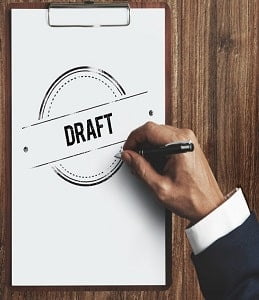Understanding Trademark Classes

Introduction
Trademarks are an essential part of business strategy, protecting brand identity and distinguishing goods or services from those of competitors. In India, the classification of trademarks follows an internationally recognized trademark class system that helps in categorizing and registering trademarks based on the nature of goods and services they represent. This article aims to provide a detailed and easy-to-understand explanation of trademark classes in India.
What Is Class In Trademarks?
Trademark classes are categories under which goods and services are classified for the purpose of trademark registration. The classification system used in India is based on the Nice Classification (NCL), an international system that divides goods and services into 45 classes. Classes 1 to 34 cover goods, while classes 35 to 45 cover services. Each class represents a specific category of goods or services, helping in the proper identification and protection of trademarks.
Why Is Trademark Classification Important?
- Clarity and Organization: Trademark classes provide a clear and organized way to categorize goods and services, making it easier for businesses and trademark offices to manage and search trademark applications.
- Avoiding Conflicts: By classifying trademarks, it becomes easier to avoid conflicts with existing trademarks. A trademark registered in a specific class may not conflict with a similar trademark in a different class.
- Comprehensive Protection: Understanding and choosing the correct classes ensure comprehensive protection for a business’s goods or services, covering all aspects of its operations.
- Legal Compliance: Registering trademarks in the correct classes ensures legal compliance and helps in defending trademark rights in case of infringement.
Overview Of The Trademark Class List
Here’s a brief overview of the trademark classes:
Goods Classes
- Class 1: Chemicals for use in industry, science and photography, as well as in agriculture, horticulture and forestry; unprocessed artificial resins, unprocessed plastics; fire extinguishing and fire prevention compositions; tempering and soldering preparations; substances for tanning animal skins and hides; adhesives for use in industry; putties and other paste fillers; compost, manures, fertilizers; biological preparations for use in industry and science.
- Class 2: Paints, varnishes, lacquers; preservatives against rust and against deterioration of wood; colorants, dyes; inks for printing, marking and engraving; raw natural resins; metals in foil and powder form for use in painting, decorating, printing and art.
- Class 3: Non-medicated cosmetics and toiletry preparations; non-medicated dentifrices; perfumery, essential oils; bleaching preparations and other substances for laundry use; cleaning, polishing and abrasive preparations.
- Class 4: Industrial oils and greases, wax; lubricants; dust absorbing, wetting and binding compositions; fuels and illuminants; candles and wicks for lighting.
- Class 5: Pharmaceuticals, medical and veterinary preparations; sanitary preparations for medical purposes; dietetic food and substances adapted for medical or veterinary use, food for babies; dietary supplements for human beings and animals; plasters, materials for dressings; material for stopping teeth, dental wax; disinfectants; preparations for destroying vermin; fungicides, herbicides.
- Class 6: Common metals and their alloys, ores; metal materials for building and construction; transportable buildings of metal; non-electric cables and wires of common metal; small items of metal hardware; metal containers for storage or transport; safes.
- Class 7: Machines, machine tools, power-operated tools; motors and engines, except for land vehicles; machine coupling and transmission components, except for land vehicles; agricultural implements, other than hand-operated hand tools; incubators for eggs; automatic vending machines.
- Class 8: Hand tools and implements, hand-operated; cutlery; side arms, except firearms; razors.
- Class 9: Scientific, research, navigation, surveying, photographic, cinematographic, audiovisual, optical, weighing, measuring, signalling, detecting, testing, inspecting, life-saving and teaching apparatus and instruments; apparatus and instruments for conducting, switching, transforming, accumulating, regulating or controlling the distribution or use of electricity; apparatus and instruments for recording, transmitting, reproducing or processing sound, images or data; recorded and downloadable media, computer software, blank digital or analogue recording and storage media; mechanisms for coin-operated apparatus; cash registers, calculating devices; computers and computer peripheral devices; diving suits, divers’ masks, ear plugs for divers, nose clips for divers and swimmers, gloves for divers, breathing apparatus for underwater swimming; fire-extinguishing apparatus.
- Class 10: Surgical, medical, dental and veterinary apparatus and instruments; artificial limbs, eyes and teeth; orthopaedic articles; suture materials; therapeutic and assistive devices adapted for persons with disabilities; massage apparatus; apparatus, devices and articles for nursing infants; sexual activity apparatus, devices and articles.
- Class 11: Apparatus and installations for lighting, heating, cooling, steam generating, cooking, drying, ventilating, water supply and sanitary purposes.
- Class 12: Vehicles; apparatus for locomotion by land, air or water.
- Class 13: Firearms; ammunition and projectiles; explosives; fireworks.
- Class 14: Precious metals and their alloys; jewellery, precious and semi-precious stones; horological and chronometric instruments.
- Class 15: Musical instruments; music stands and stands for musical instruments; conductors’ batons.
- Class 16: Paper and cardboard; printed matter; bookbinding material; photographs; stationery and office requisites, except furniture; adhesives for stationery or household purposes; drawing materials and materials for artists; paintbrushes; instructional and teaching materials; plastic sheets, films and bags for wrapping and packaging; printers’ type, printing blocks.
- Class 17: Unprocessed and semi-processed rubber, gutta-percha, gum, asbestos, mica and substitutes for all these materials; plastics and resins in extruded form for use in manufacture; packing, stopping and insulating materials; flexible pipes, tubes and hoses, not of metal.
- Class 18: Leather and imitations of leather; animal skins and hides; luggage and carrying bags; umbrellas and parasols; walking sticks; whips, harness and saddlery; collars, leashes and clothing for animals.
- Class 19: Materials, not of metal, for building and construction; rigid pipes, not of metal, for building; asphalt, pitch, tar and bitumen; transportable buildings, not of metal; monuments, not of metal.
- Class 20: Furniture, mirrors, picture frames; containers, not of metal, for storage or transport; unworked or semi-worked bone, horn, whalebone or mother-of-pearl; shells; meerschaum; yellow amber.
- Class 21: Household or kitchen utensils and containers; cookware and tableware, except forks, knives and spoons; combs and sponges; brushes, except paintbrushes; brush-making materials; articles for cleaning purposes; unworked or semi-worked glass, except building glass; glassware, porcelain and earthenware.
- Class 22: Ropes and string; nets; tents and tarpaulins; awnings of textile or synthetic materials; sails; sacks for the transport and storage of materials in bulk; padding, cushioning and stuffing materials, except of paper, cardboard, rubber or plastics; raw fibrous textile materials and substitutes therefor.
- Class 23: Yarns and threads for textile use.
- Class 24: Textiles and substitutes for textiles; household linen; curtains of textile or plastic.
- Class 25: Clothing, footwear, headwear.
- Class 26: Lace, braid and embroidery, and haberdashery ribbons and bows; buttons, hooks and eyes, pins and needles; artificial flowers; hair decorations; false hair.
- Class 27: Carpets, rugs, mats and matting, linoleum and other materials for covering existing floors; wall hangings, not of textile.
- Class 28: Games, toys and playthings; video game apparatus; gymnastic and sporting articles; decorations for Christmas trees.
- Class 29: Meat, fish, poultry and game; meat extracts; preserved, frozen, dried and cooked fruits and vegetables; jellies, jams, compotes; eggs; milk, cheese, butter, yogurt and other milk products; oils and fats for food.
- Class 30: Coffee, tea, cocoa and substitutes therefor; rice, pasta and noodles; tapioca and sago; flour and preparations made from cereals; bread, pastries and confectionery; chocolate; ice cream, sorbets and other edible ices; sugar, honey, treacle; yeast, baking-powder; salt, seasonings, spices, preserved herbs; vinegar, sauces and other condiments; ice (frozen water).
- Class 31: Raw and unprocessed agricultural, aquacultural, horticultural and forestry products; raw and unprocessed grains and seeds; fresh fruits and vegetables, fresh herbs; natural plants and flowers; bulbs, seedlings and seeds for planting; live animals; foodstuffs and beverages for animals; malt.
- Class 32: Beers; non-alcoholic beverages; mineral and aerated waters; fruit beverages and fruit juices; syrups and other preparations for making non-alcoholic beverages.
- Class 33: Alcoholic beverages, except beers; alcoholic preparations for making beverages.
- Class 34: Tobacco and tobacco substitutes; cigarettes and cigars; electronic cigarettes and oral vaporizers for smokers; smokers’ articles; matches.
Services Classes
- Class 35: Advertising; business management, organization and administration; office functions.
- Class 36: Financial, monetary and banking services; insurance services; real estate services.
- Class 37: Construction services; installation and repair services; mining extraction, oil and gas drilling.
- Class 38: Telecommunications services.
- Class 39: Transport; packaging and storage of goods; travel arrangement.
- Class 40: Treatment of materials; recycling of waste and trash; air purification and treatment of water; printing services; food and drink preservation.
- Class 41: Education; providing of training; entertainment; sporting and cultural activities.
- Class 42: Scientific and technological services and research and design relating thereto; industrial analysis, industrial research and industrial design services; quality control and authentication services; design and development of computer hardware and software.
- Class 43: Services for providing food and drink; temporary accommodation.
- Class 44: Medical services; veterinary services; hygienic and beauty care for human beings or animals; agriculture, aquaculture, horticulture and forestry services.
- Class 45: Legal services; security services for the physical protection of tangible property and individuals; dating services, online social networking services; funerary services; babysitting.
How to Choose the Right Trademark Class
Choosing the right trademark class is crucial for the effective protection of a brand. Here are some steps to help in selecting the appropriate class:
- Identify Your Goods or Services: Clearly define the goods or services your business offers. This helps in narrowing down the relevant classes.
- Refer to the Nice Classification: Use the Nice Classification to find the classes that best match your goods or services. Each class has a detailed description to guide you.
- Consider Related Classes: Sometimes, goods or services might fall into multiple classes. Consider registering your trademark in related classes to ensure broader protection.
- Consult a Trademark Attorney: If you are unsure about the correct class, consulting a trademark attorney can provide professional guidance and ensure accurate classification. To know the correct class for your Trademark Registration, contact us now.
Conclusion
Understanding trademark classes in India is fundamental for any business looking to protect its brand identity. Proper classification not only aids in avoiding conflicts and ensuring comprehensive protection but also plays a crucial role in legal compliance. By following the Nice Classification system and consulting with experts when necessary, businesses can navigate the trademark registration process more effectively and secure their brand assets.
Registering your trademark in the right class is a critical step in safeguarding your brand and ensuring its long-term success in the marketplace.




